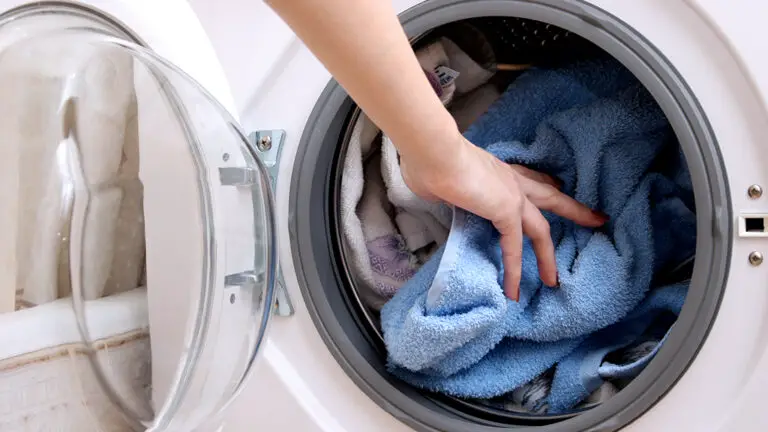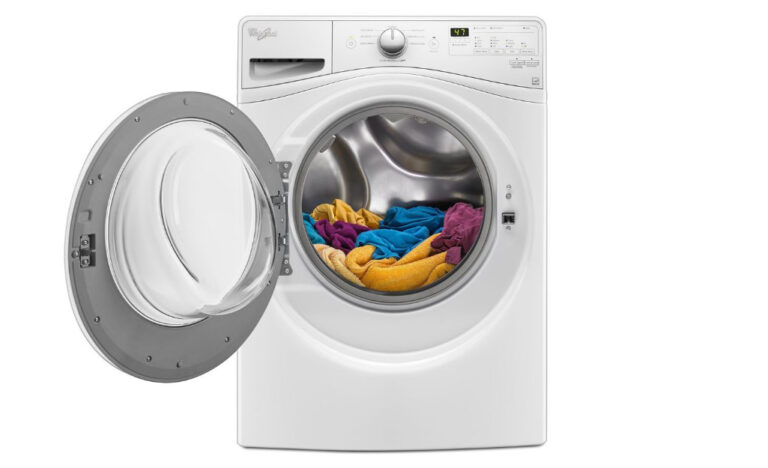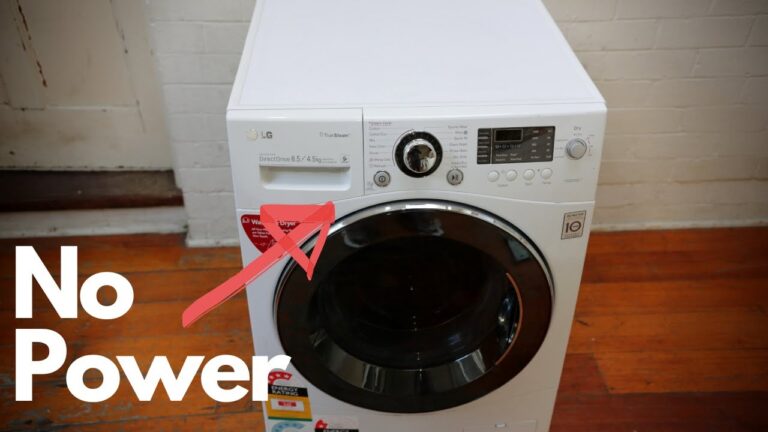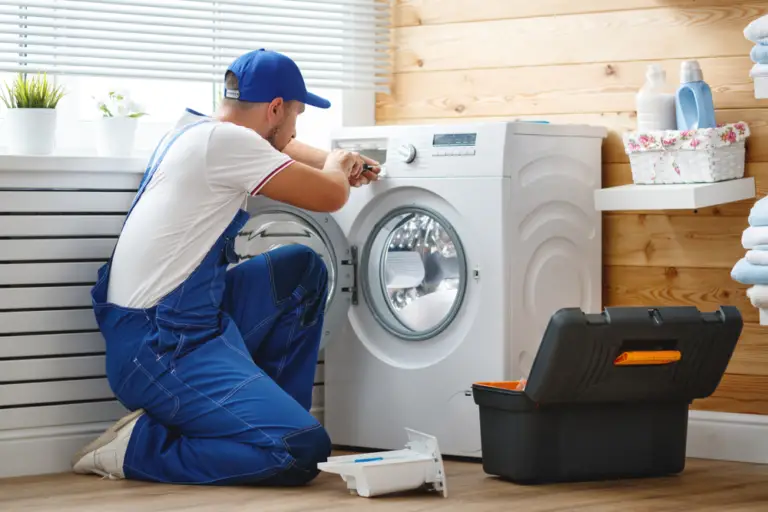Washing Machine Trouble: Quick Fixes for Common Issues
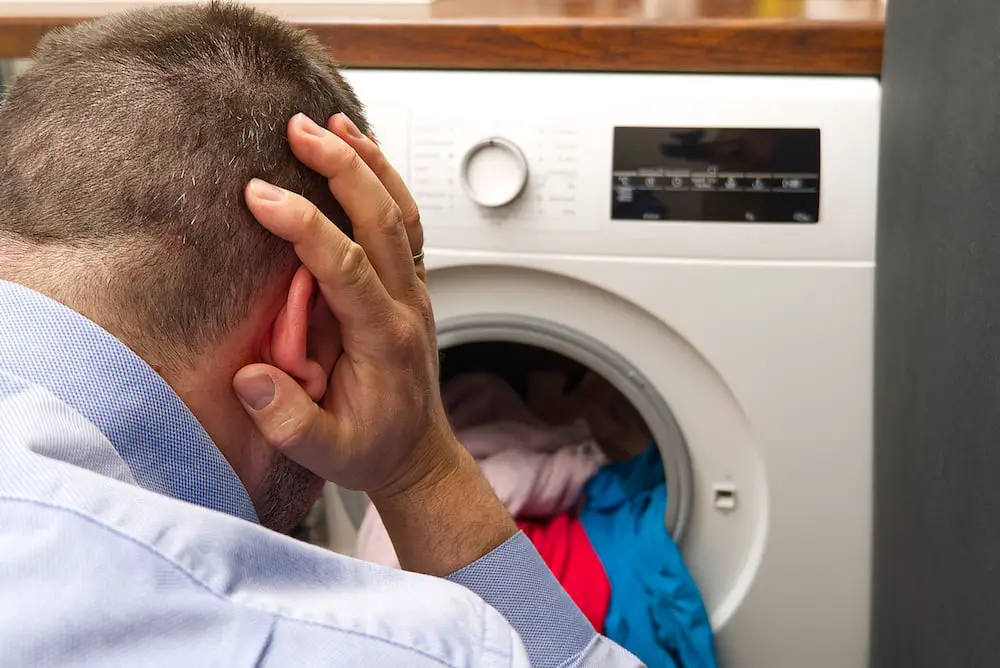
A washing machine malfunction can disrupt your daily routine. Addressing the issue promptly ensures smooth laundry operations.
Washing machines are essential household appliances that simplify our lives by handling laundry efficiently. Despite their reliability, these machines can occasionally experience problems that hinder their performance. Common issues include drainage problems, unusual noises, and failure to start. Identifying and resolving these problems quickly is crucial to maintain the machine’s functionality and avoid costly repairs.
Regular maintenance and timely troubleshooting can extend the lifespan of your washing machine. This guide will help you understand common washing machine issues and provide practical solutions to keep your appliance running smoothly. By addressing problems early, you can ensure your washing machine remains a reliable part of your daily routine.
No Power
One of the most frustrating issues with a washing machine is no power. This problem can stop your laundry day in its tracks. Thankfully, most power issues are easy to diagnose and fix. Follow these steps to troubleshoot a washing machine with no power.
Check Power Supply
First, ensure the washing machine is properly plugged in. Sometimes, the plug can come loose. Check if the power outlet is working by plugging in another device. If the other device works, the outlet is fine. If not, you may need to repair the outlet.
| Power Supply Checklist |
|---|
| Check if the plug is securely connected. |
| Test the power outlet with another device. |
Inspect Fuses And Circuit Breakers
If the power supply is fine, inspect your home’s fuses and circuit breakers. A blown fuse or tripped breaker can cut power to the washing machine.
- Locate your home’s fuse box or circuit breaker panel.
- Check for any blown fuses or tripped breakers.
- Replace any blown fuses with new ones.
- Reset any tripped breakers by flipping them off and then on.
After replacing fuses or resetting breakers, try turning on the washing machine again. This simple step often restores power.
By checking the power supply and inspecting fuses and circuit breakers, you can resolve most power issues with your washing machine. Remember to always prioritize safety when dealing with electrical components.

Credit: www.youtube.com
Water Leakage
Water leakage from your washing machine can be annoying. This issue can cause damage to your floor and other areas. Fixing leaks quickly is important. Below are some steps to help you identify and fix water leaks.
Examine Hoses
The first step is to examine the hoses. Check both the hot and cold water hoses. Look for cracks, wear, and loose connections. Use a flashlight to see better.
- Inspect the hoses for any visible damage.
- Ensure the hoses are securely connected to the machine.
- Replace any damaged hoses immediately.
Make sure the hoses are not bent or kinked. This can cause leaks over time. Use new washers if needed.
Inspect Door Seals
Next, inspect the door seals. The door seals keep water inside the machine.
- Open the washing machine door.
- Check the rubber seals for any wear or tear.
- Clean the seals with a damp cloth.
- Replace worn seals to prevent leaks.
Debris and soap scum can build up on seals. This can cause water to leak out. Regular cleaning helps keep the seals in good condition.
Water leakage is a common issue with washing machines. Following these steps can help you keep your machine in top shape.
Drum Not Spinning
If your washing machine drum is not spinning, don’t panic. This issue can be fixed with simple checks. First, examine the load balance. Next, inspect the drive belt. These steps can help you solve the problem quickly.
Check Load Balance
A common cause for the drum not spinning is an unbalanced load. Ensure the clothes are evenly distributed. Too many clothes on one side can stop the drum from spinning.
- Open the washing machine door.
- Redistribute the clothes evenly.
- Remove heavy items if needed.
You can also check the washing machine’s level. Use a spirit level to ensure it is even. Uneven machines can cause spinning issues.
Inspect Drive Belt
The drive belt connects the motor to the drum. If the belt is loose or broken, the drum will not spin.
- Unplug the washing machine.
- Locate the drive belt at the back.
- Check if the belt is loose or damaged.
If the belt is damaged, replace it. Tighten it if it’s loose. This should fix the drum spinning issue.
:max_bytes(150000):strip_icc()/troubleshooting-samsung-washer-problems-2147298-final-1-f27acce116a8464794c9daec061156fc.png)
Credit: www.thespruce.com
Strange Noises
Is your washing machine making strange noises? These sounds could indicate a problem. Ignoring them might lead to bigger issues. Let’s explore the common causes and solutions.
Look For Foreign Objects
Strange noises often come from foreign objects. Items like coins, buttons, or small toys can get trapped. Check the drum and filter regularly. These objects can cause damage if left inside.
| Common Objects | Location |
|---|---|
| Coins | Drum or Filter |
| Buttons | Drum |
| Toys | Drum or Filter |
Inspect Drum Bearings
Worn drum bearings can cause loud noises. Bearings support the drum’s rotation. If they wear out, the drum won’t spin smoothly. This can lead to loud, grinding noises.
- Check for unusual sounds during the spin cycle.
- Listen for a grinding noise.
- Inspect the drum for wobbling.
If you suspect bearing issues, it’s best to call a professional. Replacing drum bearings requires skill and special tools.
Water Not Draining
A common issue with washing machines is water not draining. This problem can leave your clothes soaking wet. It can also cause a bad smell from stagnant water. Understanding the causes can help you fix it quickly.
Clean Drain Pump
The drain pump helps remove water from the washing machine. If it gets clogged, water won’t drain. To clean the drain pump, follow these steps:
- Turn off and unplug the washing machine.
- Locate the drain pump, usually at the bottom front.
- Open the pump cover and remove any debris.
- Check the pump impeller to ensure it’s not jammed.
Cleaning the drain pump regularly can prevent clogs. Make sure to check it every few months.
Check Drain Hose
A blocked drain hose can also stop water from draining. To check the drain hose, follow these steps:
- Disconnect the hose from the machine and the drain pipe.
- Inspect the hose for any blockages.
- Use a long brush to clear any debris inside.
- Reattach the hose securely to both ends.
Ensure the drain hose is not kinked or bent. A smooth, clear hose allows water to flow freely.
If you still face issues, the problem might be more complex. In such cases, consider seeking professional help.

Credit: www.youtube.com
Unpleasant Odors
Unpleasant odors in your washing machine can be quite frustrating. These smells can transfer to your clothes. Understanding the causes and solutions is essential. Here, we will discuss easy steps to tackle this issue.
Run Cleaning Cycle
One effective way to eliminate odors is to run a cleaning cycle. Most modern washing machines have a dedicated cleaning cycle. If your machine lacks this feature, use a hot water cycle instead.
- Add a cup of white vinegar or a washing machine cleaner.
- Set your machine to the hottest and longest cycle.
- Let the cycle complete and then leave the door open to air dry.
Inspect Door Gasket
The door gasket, or rubber seal, can trap moisture and debris. This often leads to unpleasant odors. Inspecting and cleaning it regularly is crucial.
| Step | Action |
|---|---|
| 1 | Open the door and pull back the gasket. |
| 2 | Check for mold, mildew, and small objects. |
| 3 | Wipe the gasket with a cloth soaked in soapy water. |
| 4 | Dry the gasket with a clean towel. |
Regular maintenance of the door gasket can prevent odor build-up. Always keep it dry after each wash. This simple step can make a big difference.
Detergent Dispenser Issues
Detergent dispenser issues can be a common problem for washing machine owners. These issues can affect the cleaning efficiency of your machine. Proper care and maintenance can help prevent these problems.
Clean Dispenser Drawer
A dirty dispenser drawer can cause detergent to build up. This can lead to clogging and poor detergent flow. Here are some simple steps to clean the dispenser drawer:
- Remove the dispenser drawer from the machine.
- Rinse it under warm water to remove residue.
- Use a soft brush to scrub away stubborn stains.
- Dry the drawer thoroughly before placing it back.
Regular cleaning can prevent detergent buildup and ensure efficient washing.
Check Water Pressure
Low water pressure can affect the detergent dispenser’s performance. If the water pressure is too low, the detergent may not be fully flushed out. Follow these steps to check your water pressure:
- Turn off the washing machine.
- Disconnect the water supply hose.
- Check the hose for any blockages.
- Run water through the hose into a bucket.
- Ensure a strong, steady flow of water.
If the water flow is weak, you may need to contact a plumber. Good water pressure ensures the detergent is properly dispensed and used.
| Issue | Solution |
|---|---|
| Dirty dispenser drawer | Clean regularly with warm water and a brush. |
| Low water pressure | Check hoses and ensure a strong flow of water. |
Addressing these issues can help maintain your washing machine’s performance. Keep your dispenser drawer clean and ensure proper water pressure for optimal results.
Control Panel Problems
Washing machines are essential home appliances. They simplify our laundry tasks. But control panel problems can disrupt their functionality. Understanding and addressing these issues can save you time and money.
Reset The Machine
A simple reset can solve many control panel issues. Follow these steps:
- Unplug the washing machine from the power source.
- Wait for at least one minute.
- Plug the machine back in.
- Power on the washing machine.
This process can clear minor glitches and restore normal function.
Inspect Wiring Connections
Loose or damaged wiring can cause control panel problems. Check these areas:
| Connection Point | Action |
|---|---|
| Power Cord | Ensure it’s securely plugged in. |
| Control Board | Look for loose or frayed wires. |
| Internal Wiring | Inspect for any visible damage. |
Addressing these issues can prevent control panel malfunctions.
Regular maintenance and quick checks can keep your washing machine running smoothly. Always refer to your user manual for specific instructions.
Frequently Asked Questions
What Is The Most Common Problem With A Washing Machine?
The most common problem with a washing machine is a clogged or malfunctioning drain pump. This can cause water drainage issues.
How Do I Diagnose What’s Wrong With My Washing Machine?
Check for power issues, inspect hoses for leaks, listen for unusual noises, and ensure the drum spins freely. Consult the user manual.
What Usually Fails On A Washing Machine Top Loader?
Common failures on a top loader washing machine include a broken lid switch, worn drive belts, or a faulty water inlet valve. Regular maintenance can prevent these issues.
Why Is My Washer Malfunctioning?
Your washer may malfunction due to clogged filters, broken belts, faulty motors, or electrical issues. Check for blockages and loose connections.
What Causes A Washing Machine To Stop Working?
A faulty motor, broken belt, or electrical issues can cause a washing machine to stop working.
How Do I Fix A Leaking Washing Machine?
Check hoses, door seals, and water pump for leaks. Replace damaged parts to fix a leaking washing machine.
Why Is My Washing Machine Not Spinning?
A washing machine may not spin due to a broken belt, faulty lid switch, or motor issues.
How Often Should I Clean My Washing Machine?
Clean your washing machine every month to prevent mold, mildew, and detergent buildup.
Conclusion
Dealing with washing machine trouble can be frustrating but manageable. Regular maintenance and quick fixes can save time and money. Always consult a professional for serious issues. Keep your washing machine in top shape for efficient performance. Thank you for reading.
Share your tips and experiences in the comments below!

